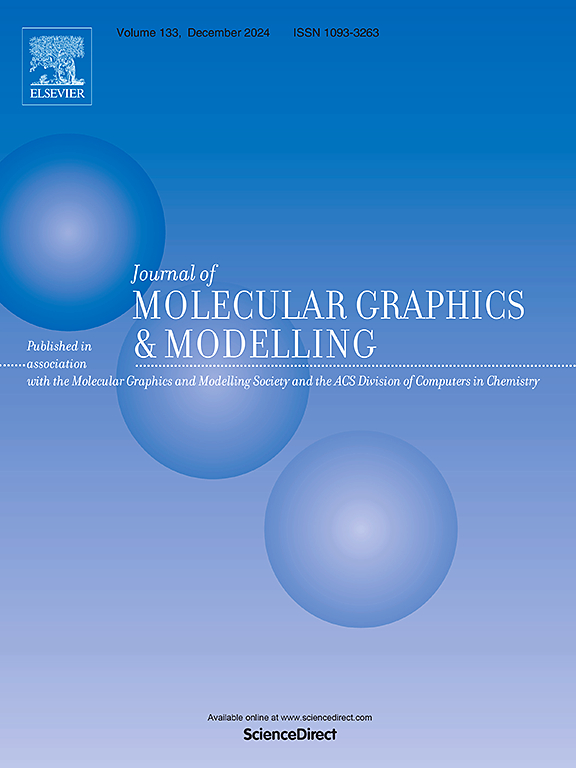Glipizide inhibits the glycation of alpha-crystallin: A combined in vitro and in silico approach in retinopathy management
IF 2.7
4区 生物学
Q2 BIOCHEMICAL RESEARCH METHODS
引用次数: 0
Abstract
In human eye, structural proteins, known as crystallins, play a crucial role in maintaining the eye's refractive index. These crystallins constitute majority of the total soluble proteins found in the eye lens. Among them, α-crystallins (α-CR) is one of the major components. Under hyperglycaemic conditions, crystallins become susceptible to glycation that ultimately leads to advanced glycation endproducts (AGEs) formation. Glipizide is a well-known oral medication used in controlling levels of blood sugar, this drug stimulates the insulin release from pancreas. However, this drug has not been thoroughly investigated for its impact on α-CR glycation. In this study, we explored glipizide's protective role against glucose-induced α-CR glycation. Remarkably, glipizide effectively inhibited the formation of early glycation products, ultimately reducing AGEs formation. Additionally, glipizide provides protection against modifications of free lysine residues and lowered the carbonyl content. To gain deeper insights into mechanism of inhibition, we turn to binding studies and bioinformatics. Glipizide formed stable complex with α-CR with values of Gibbs energy ranging from −5.848 to −6.695 kcal/mol. Molecular docking revealed the binding energy as −6.5 kcal/mol and lysine residues emerged as a prominent among the key interacting residues. Notably, glipizide appears to mask lysine residues, thereby contributing to the inhibition of α-CR glycation. Furthermore, analysis of molecular simulation data reinforces the stability of this complex. Consequently, the stable α-CR-glipizide complex may prevent glucose from binding to α-CR. Overall, glipizide holds promise as a preventive measure against glycation of eye lens proteins, potentially benefiting in diabetic retinopathy.

格列吡嗪抑制α -结晶蛋白糖基化:一种体外和计算机联合治疗视网膜病变的方法。
在人眼中,结构蛋白(即晶体蛋白)在维持眼睛的折射率方面发挥着至关重要的作用。这些晶体蛋白占眼球晶状体中可溶性蛋白质总量的大部分。其中,α-晶体蛋白(α-CR)是主要成分之一。在高血糖条件下,晶体蛋白容易发生糖化,最终导致高级糖化终产物(AGEs)的形成。格列吡嗪是一种用于控制血糖水平的知名口服药物,这种药物能刺激胰腺释放胰岛素。然而,这种药物对α-CR糖化的影响尚未得到深入研究。在这项研究中,我们探讨了格列吡嗪对葡萄糖诱导的α-CR糖化的保护作用。值得注意的是,格列吡嗪能有效抑制早期糖化产物的形成,最终减少 AGEs 的形成。此外,格列吡嗪还能防止游离赖氨酸残基的修饰,降低羰基含量。为了深入了解抑制机制,我们转向了结合研究和生物信息学。格列吡嗪与α-CR形成了稳定的复合物,其吉布斯能值为-5.848至-6.695 kcal/mol。分子对接显示其结合能为-6.5 kcal/mol,赖氨酸残基在关键的相互作用残基中占据突出位置。值得注意的是,格列吡嗪似乎掩盖了赖氨酸残基,从而有助于抑制α-CR糖化。此外,分子模拟数据分析也增强了该复合物的稳定性。因此,稳定的α-CR-格列吡嗪复合物可能会阻止葡萄糖与α-CR结合。总之,格列吡嗪有望成为预防眼晶状体蛋白质糖化的一种措施,可能对糖尿病视网膜病变有益。
本文章由计算机程序翻译,如有差异,请以英文原文为准。
求助全文
约1分钟内获得全文
求助全文
来源期刊

Journal of molecular graphics & modelling
生物-计算机:跨学科应用
CiteScore
5.50
自引率
6.90%
发文量
216
审稿时长
35 days
期刊介绍:
The Journal of Molecular Graphics and Modelling is devoted to the publication of papers on the uses of computers in theoretical investigations of molecular structure, function, interaction, and design. The scope of the journal includes all aspects of molecular modeling and computational chemistry, including, for instance, the study of molecular shape and properties, molecular simulations, protein and polymer engineering, drug design, materials design, structure-activity and structure-property relationships, database mining, and compound library design.
As a primary research journal, JMGM seeks to bring new knowledge to the attention of our readers. As such, submissions to the journal need to not only report results, but must draw conclusions and explore implications of the work presented. Authors are strongly encouraged to bear this in mind when preparing manuscripts. Routine applications of standard modelling approaches, providing only very limited new scientific insight, will not meet our criteria for publication. Reproducibility of reported calculations is an important issue. Wherever possible, we urge authors to enhance their papers with Supplementary Data, for example, in QSAR studies machine-readable versions of molecular datasets or in the development of new force-field parameters versions of the topology and force field parameter files. Routine applications of existing methods that do not lead to genuinely new insight will not be considered.
 求助内容:
求助内容: 应助结果提醒方式:
应助结果提醒方式:


